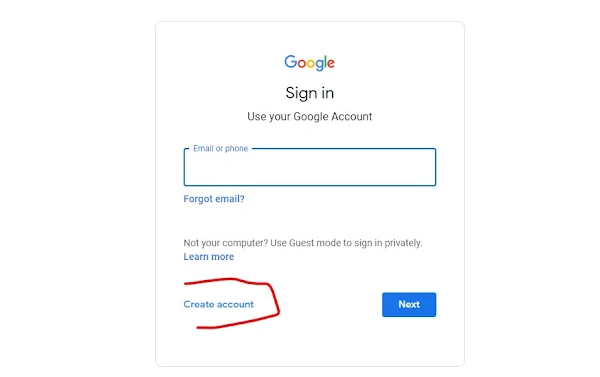Tips and Tricks for WebRTC Extension Users

|
| WebRTC extensions |
WebRTC extensions are powerful tools that enhance your web communication experience. To make the most out of these extensions, it's essential to keep a few tips and tricks in mind. In this article, we will explore some practical advice to help you optimize your usage of WebRTC extensions.
What is WebRTC Extension?
WebRTC extension is a browser add-on that allows you to control the WebRTC API in your browser. This means you can enable or disable WebRTC, as well as control specific features of WebRTC, such as the ability to use your microphone or camera.
WebRTC is a technology that allows browsers to communicate with each other in real time. This can be used for things like video chat, voice chat, and file sharing. WebRTC is a relatively new technology, but it is becoming increasingly popular.
There are a number of benefits to using WebRTC extensions. For example, you can use them to:
-
Protect your privacy: WebRTC can expose your IP address, which can be used to track you online. WebRTC extensions can help you to protect your privacy by disabling WebRTC or by hiding your IP address.
-
Improve performance: WebRTC extensions can improve the performance of WebRTC applications. For example, they can reduce the amount of data that is transferred between browsers, which can improve the quality of video and audio calls.
-
Customize your experience: WebRTC extensions allow you to customize your experience with WebRTC. For example, you can use them to enable or disable specific features of WebRTC, or to change the settings for things like the quality of video and audio.
Tips and Tricks for WebRTC Extension Users
It's essential to keep a few tips and tricks in mind. In this article, we will explore some practical advice to help you optimize your usage of WebRTC extensions.
Keeping Extensions Up to Date
Just like any other software, WebRTC extensions receive regular updates from developers. It's crucial to keep your extensions up to date to benefit from bug fixes, security enhancements, and new features. Most browsers have an automatic update feature for extensions, but you can also manually check for updates in the extension's settings or through the browser's extension store.
Ensuring Compatibility with WebRTC Applications
WebRTC extensions work in tandem with various web applications and platforms. However, compatibility issues can arise due to differences in browser versions, operating systems, or specific application requirements. Before installing a WebRTC extension, check for compatibility information provided by the extension developer. Additionally, ensure that your browser and operating system are updated to the latest versions to avoid any compatibility issues.
Read Also: What is WebRTC Extension?
Troubleshooting Common Issues
Despite the advancements in WebRTC technology, you may encounter occasional issues while using WebRTC extensions. Here are some common problems and their potential solutions:
-
Audio or Video Quality Issues: If you experience poor audio or video quality, check your internet connection and ensure that it meets the minimum bandwidth requirements for WebRTC communication. Additionally, verify that your microphone and camera are functioning correctly and that the correct devices are selected in your browser's settings.
-
Extension Not Working: If the WebRTC extension is not functioning as expected, try disabling and re-enabling the extension or restarting your browser. If the problem persists, consider uninstalling and reinstalling the extension. If the issue still persists, check the extension's support documentation or reach out to the developer for further assistance.
-
Firewall or Network Restrictions: In some cases, firewalls or network restrictions may interfere with WebRTC communication. If you are unable to establish a connection or encounter frequent disconnections, consult your network administrator or IT department to ensure that the necessary ports and protocols are open for WebRTC communication.
-
Privacy and Security Concerns: While WebRTC extensions enhance your communication experience, it's crucial to prioritize privacy and security. Before installing any extension, review the permissions it requires and the privacy policy provided by the developer. Be cautious when granting permissions that involve accessing your camera, microphone, or other sensitive data. Stick to reputable extension sources and consider reading user reviews to assess the credibility of an extension.
Remember, troubleshooting can vary depending on the specific extension and browser you are using. If you encounter persistent issues, don't hesitate to seek help from the extension's support channels or online forums where fellow users may have encountered similar problems.
By following these tips and tricks, you can overcome common challenges and maximize the benefits of WebRTC extensions. Stay informed about updates and ensure compatibility to enjoy seamless real-time communication with enhanced features and functionalities.
Future of WebRTC Extensions

|
| WebRTC extensions |
Advancements in WebRTC Extensions
The future of WebRTC extensions holds great promise as developers and innovators continue to push the boundaries of what is possible. Here are some exciting advancements to look forward to:
Improved Performance
Efforts are being made to optimize WebRTC extensions for better performance, including reducing latency and enhancing video and audio quality. This will result in smoother and more immersive real-time communication experiences.
Enhanced Security
Security and privacy are critical in any online communication. The future of WebRTC extensions will see the implementation of stronger encryption protocols and improved authentication mechanisms to ensure secure and private communication between users.
Read Also: Exploring WebRTC Extension Features
Cross-Platform Compatibility
WebRTC extensions are already compatible with major browsers, but the future will bring even greater cross-platform compatibility. This means that users will be able to enjoy seamless communication experiences regardless of the device or browser they are using.
Integration with Emerging Technologies
WebRTC extensions will likely integrate with emerging technologies to provide even more exciting features. For example, the integration of WebRTC with virtual reality (VR) and augmented reality (AR) technologies could enable immersive virtual meetings and collaborative experiences.
Read Also: Step-by-Step Guide to Installing and Using WebRTC Extensions
Emerging Trends and Possibilities
As WebRTC extensions continue to evolve, several emerging trends and possibilities are worth considering:
WebRTC Extensions in Mobile Applications
With the proliferation of smartphones and mobile applications, the integration of WebRTC extensions into mobile platforms will become increasingly prevalent. This will allow users to enjoy real-time communication features in their favorite mobile apps, enhancing the way they connect and collaborate on the go.
WebRTC Extensions in IoT Devices
The Internet of Things (IoT) is expanding rapidly, and integrating WebRTC extensions into IoT devices opens up new possibilities for real-time communication. Imagine controlling your smart home devices through a video call or collaborating with colleagues using IoT-enabled screens.
WebRTC Extensions in E-Learning and Telemedicine
The COVID-19 pandemic has highlighted the importance of remote learning and telemedicine. WebRTC extensions can play a crucial role in improving the quality of virtual classrooms and telehealth services. Interactive video capabilities, screen sharing, and real-time collaboration tools can enhance the effectiveness of these remote experiences.
WebRTC Extensions in Gaming
Real-time communication is an integral part of multiplayer gaming experiences. WebRTC extensions can enhance gaming by providing seamless audio and video communication between players, enabling real-time collaboration, and facilitating social interactions within the gaming community.
Conclusion
This Tips provides valuable tips and tricks to help WebRTC extension users optimize their usage. Keeping extensions up to date, ensuring compatibility with web applications, and troubleshooting common issues are essential for a smooth and reliable communication experience.
By implementing these suggestions, you can overcome challenges, maintain security and privacy, and unlock the full potential of WebRTC extensions in your online interactions.
The future of WebRTC extensions is exciting and full of possibilities. Advancements in performance, security, cross-platform compatibility, and integration with emerging technologies will shape the way we communicate and collaborate online.
As developers continue to innovate and users embrace these advancements, WebRTC extensions will become an essential component of our digital lives, enabling seamless and immersive real-time communication experiences across various domains. Stay tuned for the latest developments in WebRTC extensions as they continue to transform the way we connect, collaborate, and communicate.
FAQ Section:
What is a WebRTC extension?
A WebRTC extension is a browser add-on that allows you to control the WebRTC API in your browser. It enables you to enable or disable WebRTC functionality and control specific features like microphone and camera usage.
What is WebRTC?
WebRTC is a technology that enables real-time communication between web browsers. It facilitates functionalities such as video chat, voice chat, and file sharing directly within web applications.
What are the benefits of using WebRTC extensions?
WebRTC extensions offer several benefits, including:
- Privacy protection by disabling WebRTC or hiding your IP address.
- Improved performance through reduced data transfer, leading to better audio and video quality.
- Customization options to enable/disable specific features or adjust video and audio settings.
How can I keep my WebRTC extensions up to date?
To keep your WebRTC extensions up to date, you can:
- Enable automatic updates if supported by your browser.
- Manually check for updates in the extension's settings or your browser's extension store.
How can I ensure compatibility between WebRTC extensions and applications?
To ensure compatibility, follow these steps:
- Check for compatibility information provided by the extension developer before installation.
- Keep your browser and operating system updated to the latest versions.
What should I do if I encounter audio or video quality issues with WebRTC extensions?
If you experience poor audio or video quality, try the following:
- Check your internet connection's bandwidth and ensure it meets the minimum requirements.
- Verify that your microphone and camera are functioning correctly.
- Confirm that the correct devices are selected in your browser's settings.
What should I do if my WebRTC extension is not working?
If your WebRTC extension is not functioning properly:
- Disable and re-enable the extension or restart your browser.
- Consider uninstalling and reinstalling the extension if the issue persists.
- Consult the extension's support documentation or contact the developer for further assistance.
How can I troubleshoot firewall or network restrictions affecting WebRTC communication?
If you encounter firewall or network-related issues:
- Consult your network administrator or IT department to ensure the necessary ports and protocols are open for WebRTC communication.
How can I address privacy and security concerns with WebRTC extensions?
To prioritize privacy and security:
- Review the permissions and privacy policy provided by the extension developer.
- Be cautious when granting permissions to access sensitive data like your camera or microphone.
- Install extensions from reputable sources and consider reading user reviews for credibility assessment.
Where can I seek help for persistent WebRTC extension issues?
If you encounter persistent issues, you can seek help from:
- The extension's support channels.
- Online forums where fellow users may have encountered similar problems.
What advancements can we expect in the future of WebRTC extensions?
The future of WebRTC extensions holds promise with advancements such as:
- Improved performance with reduced latency and enhanced audio/video quality.
- Enhanced security through stronger encryption protocols and improved authentication mechanisms.
- Cross-platform compatibility to ensure seamless communication experiences across devices and browsers.
- Integration with emerging technologies like virtual reality (VR) and augmented reality (AR) for immersive meetings and collaboration.
How can WebRTC extensions impact other domains?
WebRTC extensions have the potential to impact other domains:
- Mobile Applications: Integration into mobile platforms for real-time communication on the go.
- IoT Devices: Integration into IoT devices for video calls and collaboration.
-
E-Learning and Telemedicine: Enhancing remote learning and telehealth services with interactive
video, screen sharing, and real-time collaboration.
- Gaming: Enabling seamless audio and video communication, real-time collaboration, and social interactions within the gaming community.



